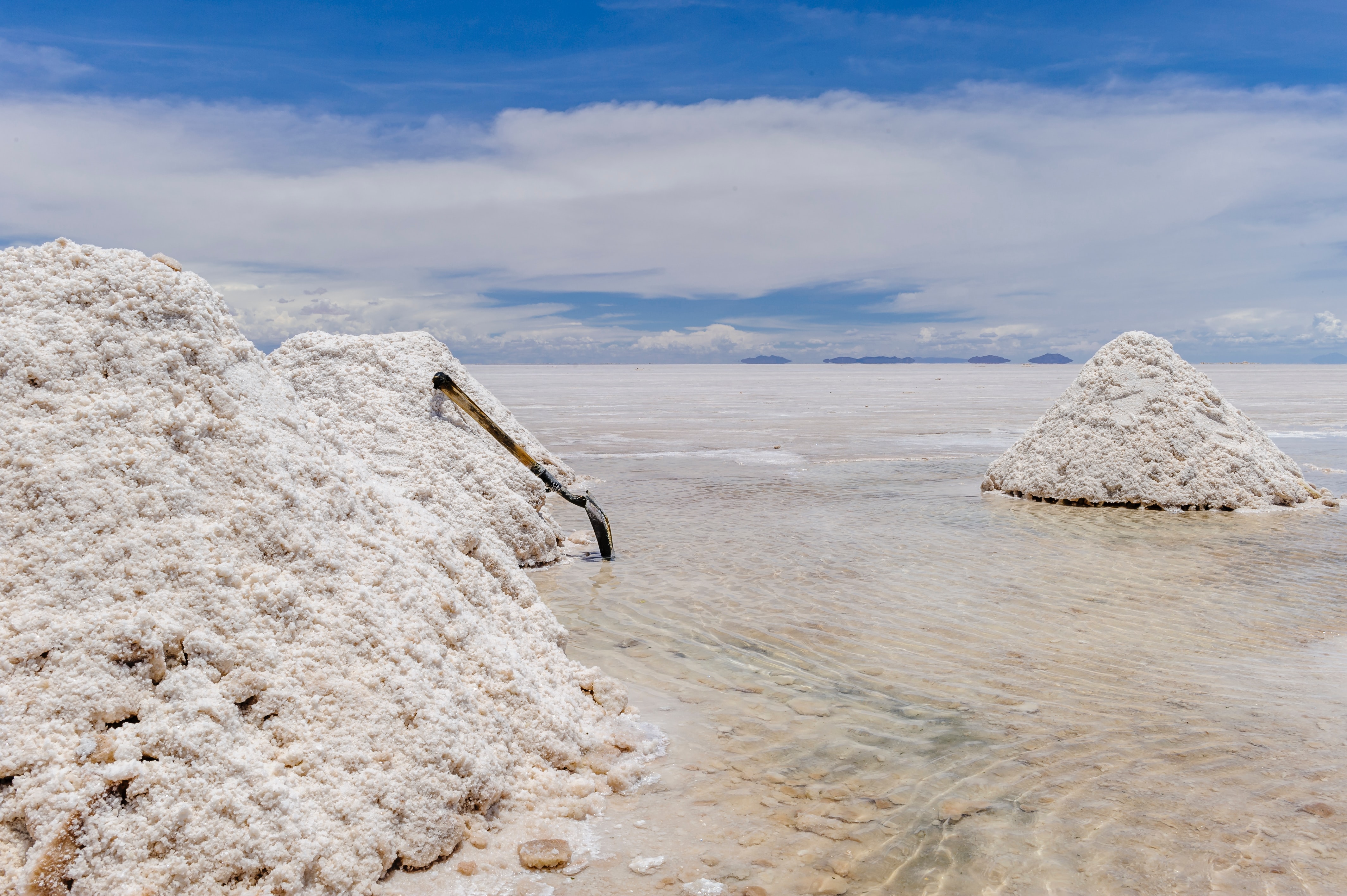“Water, Water Everywhere Nor Any Drop To Drink”
At IntoCeramics, we spend a lot of time thinking about materials – most of them solid minerals.
They may be in mountains, fields, or on in a stream bank. They may even be under the ocean.
But, with the obvious exception of oil and gas, we tend to think of mining as a solids-based activity - dig it out, extract what you need, and reclaim the land.
However, this is not the complete picture.
The recent acceleration in the search for critical materials has led to some interesting research and development leading us back to the water.
Specifically, to the world’s oceans.
Extracting minerals from seawater is hardly new. Ancient peoples fortunate enough to live by the sea quickly discovered that the white powder left behind when water evaporated could be used both to season food and preserve it.
Today, vast quantities of sea salt are produced by evaporative methods.
Underground mining of solid rock salt (halite) by solution mining is also widely employed in the U.S. and abroad.
Seawater and Brines
Seawater isn’t the only source of mineral-rich water that we have used. The Chinese drilled wells to tap subterranean brines as early as 500 BCE.
Throughout the two-and-a-half millennia since, underground brines have been used to extract solids containing:
- Sodium Sulfate (two-thirds of the world’s production comes from the Dead Sea)
- Soda Ash
- Potash
- Boron
- Iodine (large quantities are produced from brines in Japan)
- Magnesium (virtually all magnesium produced outside China comes from seawater or magnesia rich brine)
- Bromine
And, vital to the ongoing electrification of our civilization, Lithium for batteries.
One-third of the world’s Lithium supply comes from subsurface brines, some containing as much as 4,000 ppm of the metal.
But those brines are limited and likely to be rapidly depleted as global demand for Lithium skyrockets.
What about the oceans?
Unfortunately, with an average oceanic concentration of only 0.17 parts per million, Lithium has been an unlikely candidate for extraction from seawater.
Until this...
Ceramic Membrane Seawater Lithium Mining
A recent paper published by the Royal Society of Chemistry describes an innovative ceramic membrane process for seawater lithium mining.
Developed by researchers at the King Abdullah University of Science and Technology in Saudi Arabia, the continuous electrical pumping process uses an electrochemical cell combined with a 55 µm-thick, glass-type lithium lanthanum titanium oxide membrane.
Their research was also summarized by mining.com. under the headline Scientists Develop a Cheap and Easy Method to Extract Lithium from Seawater.
The lab results are certainly impressive.
The concentration of Lithium in water from the Red Sea was increased 43,000 times, making it equivalent to that of commercial lithium-rich brines.
Even more impressive is the ion selectivity of the process, producing Lithium pure enough to meet the stringent requirements of the battery industry.
The research team estimates that $5 of electricity will be required to extract 1 kg of Lithium. That is not a prohibitive process energy load, if the estimate is shown to be accurate at a larger scale.
While completely new infrastructure would be needed to produce commercial quantities of lithium from seawater, we can already see from the magnesium and salt industries that it is possible.
And if this method of lithium concentration proves scalable, it would eliminate a major critical material shortage.
What Else is in There?
Typical seawater contains over 40 minerals and metals that can potentially be extracted.
Many of them have well established terrestrial sources – including barium, carbon, silicon, aluminum, and iron – which makes them unlikely candidates for economic extraction from seawater.
The Japanese have spent a long time working toward uranium mining from seawater, since there are an estimated 4-5 billion tonnes of uranium in the world’s oceans.
However, despite their best efforts, the process still costs 6-7 times that of land-based uranium mining.
Nevertheless, as we deplete land-based sources of critical materials, prices will rise, and seawater mining could become commercially viable.
Among the rarer, more valuable materials that could be extracted today are:
- Strontium (~13 ppm)
- Boron (~4.6 ppm)
- Rubidium (~0.2 ppm)
You’ve also probably heard that there is gold in seawater, and perhaps even entertained a fleeting thought of inventing the extraction process.
Sadly, the concentration of gold in seawater is just 0.000008 ppm, so that thought will have to remain fleeting!
Is Mining from Brine and Seawater Waste-Free?
It’s easy to imagine that extracting minerals from brine and seawater could be free from waste. Just take what you need and return the water to the ocean.
Sadly, it’s much more complicated in real life.
Selective separation of the more than forty minerals that seawater contains isn’t always possible.
While the newly discovered method of extracting lithium from seawater appears to be highly selective, processes for extracting other minerals are not.
For example, although mining from Dead Sea brine produces much of the world’s sodium sulfate, other non-commercial salts are extracted as a byproduct and end up stockpiled just like tailings at a solids mining operation.
Time will tell whether seawater mining for critical minerals will become viable and how much waste those processes will produce.
That waste could potentially be used for other purposes, including turning it IntoCeramics!
In future, our attention will shift to include not only land-based solids mining but also the materials that can potentially be obtained from three-quarters of the worlds surface: the oceans.
Feature Image: Uyuni Salt Desert, Bolivia by Alexander Schimmeck via Unsplash



